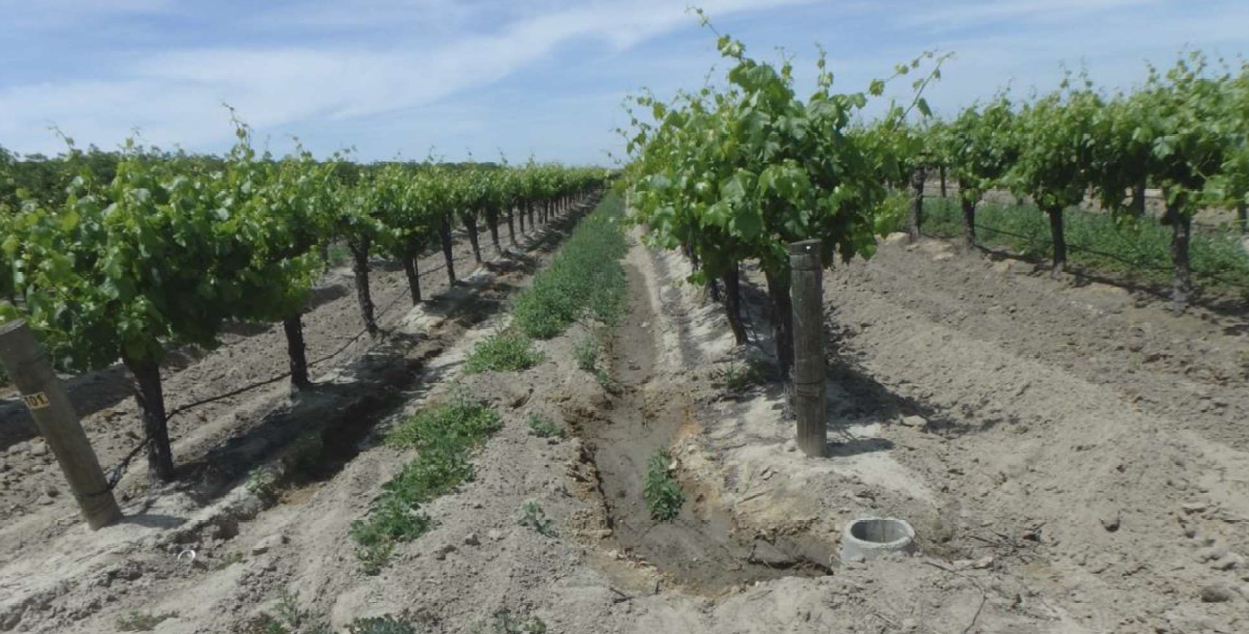This website uses cookies so that we can provide you with the best user experience possible. Cookie information is stored in your browser and performs functions such as recognising you when you return to our website and helping our team to understand which sections of the website you find most interesting and useful.
Groundwater recharge project at Ball Ranch in Madera County, California (DWR, 2023)
- Sustainable Conservation
- Department of Water Resources
- Crop System Suitability
- Infrastructure Conveyance and Hydraulics
- Recharge and Extraction Methods and Measurement
- Soils, Geology, and Aquifer Characterization
- Water Quality
Russel and Matt Efird grow raisins, almonds, walnuts, pistachios, and canning peaches in Fresno County, California. Groundwater levels on their farm have decreased 50 feet from 1992 through 2022. On-farm recharge can help to reverse groundwater overdrafting and cease land subsidence occurring in the subbasin.
This farm can be a good measure of raisin grape tolerance to recharge timing and how much flood water can be applied without increased fungal disease, such as bunch rot, compared to the growers standard practice. One of the most commonly asked questions about on-farm recharge is “How much water can be applied and when should recharge be ceased to protect
crop health?” Research continues to determine basic recharge guidelines on the timing of and how much recharge water is optimum for a given crop and soil type.
Email hidden; Javascript is required.
Copyright 2022-Present, Flood-MAR and Contributing Authors.


